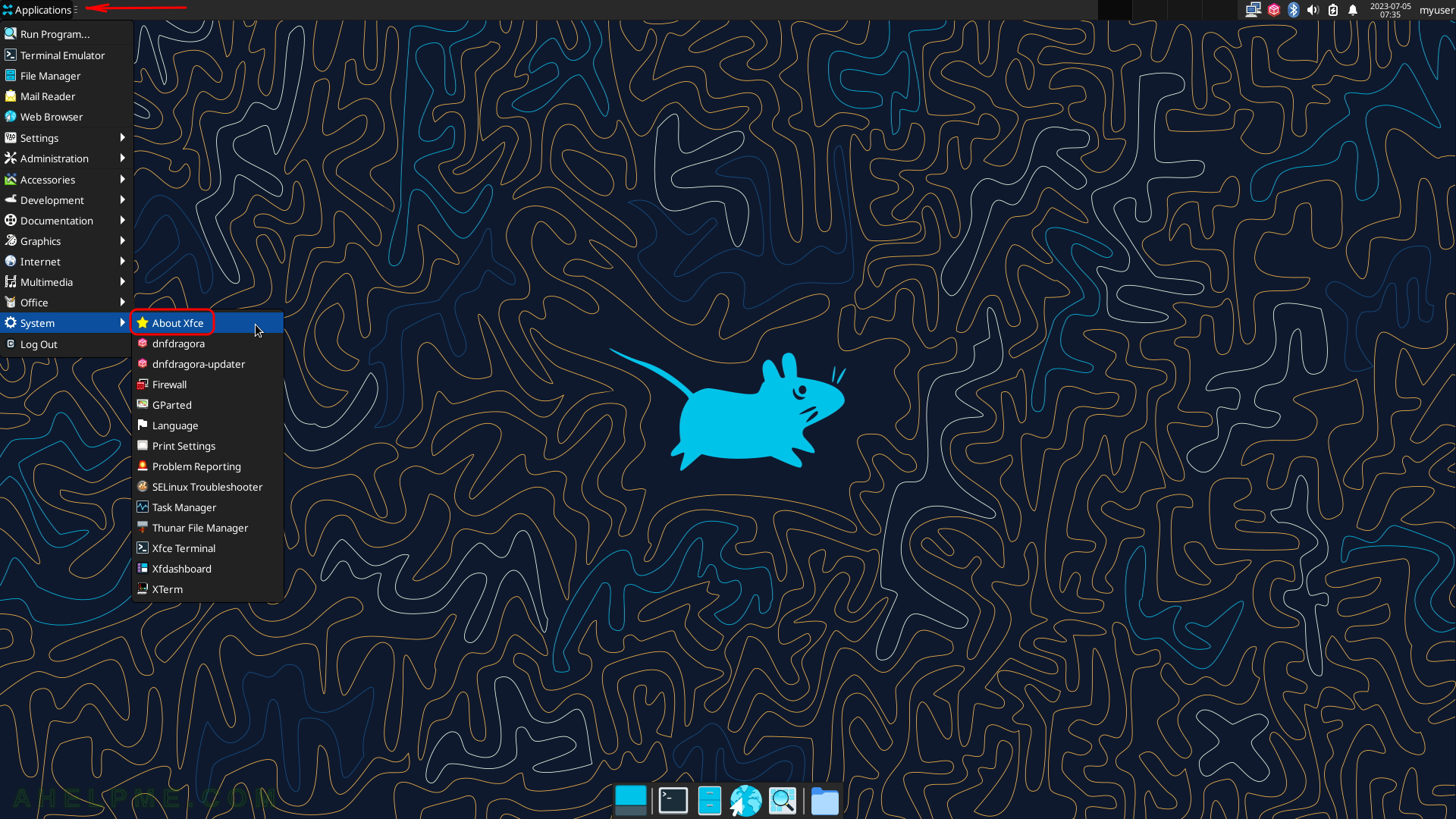SCREENSHOT 21) After the “Begin Installation”, the new disk layout is created and the old data/partitions are deleted.
Note, up to this step there were no changes applied on the selected disk. Now, the setup will modify the hard disk layout to the chosen one during the previous steps. This is the moment when the disk is modified and the old data is removed permanently.
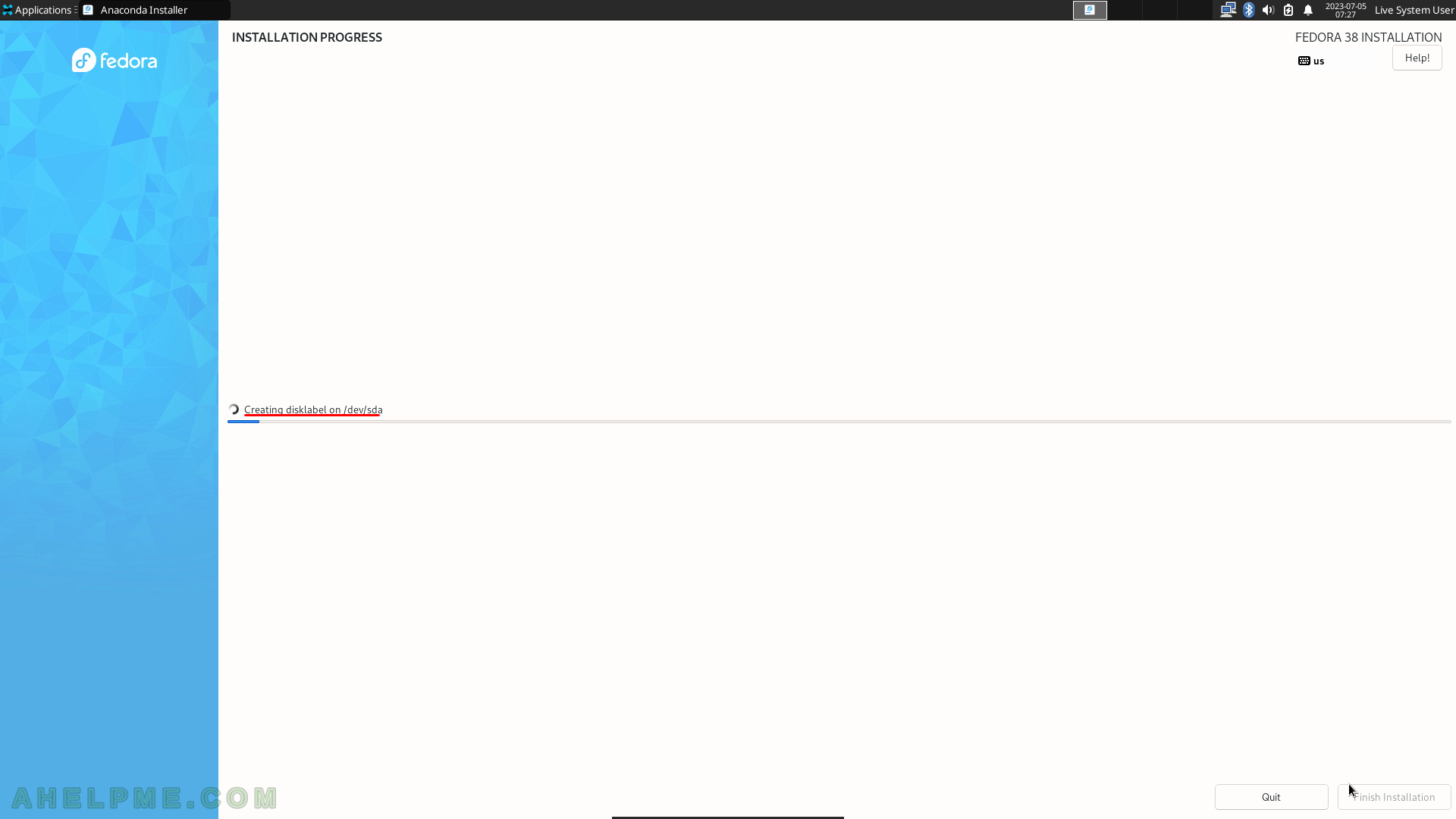
SCREENSHOT 22) The setup is still working… Installation progress is at 25%.
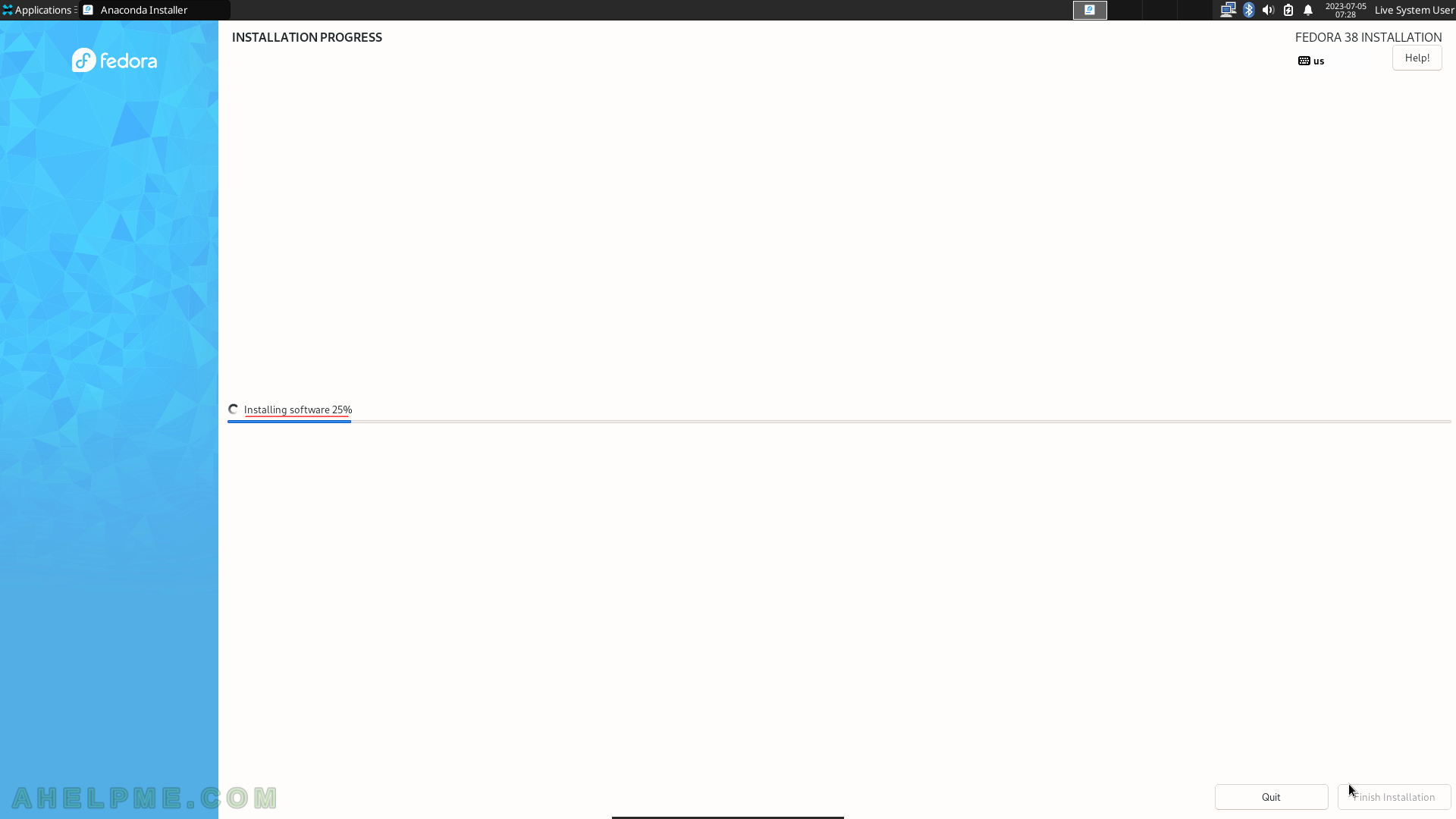
SCREENSHOT 23) The last step, the setup is installing the booting program.
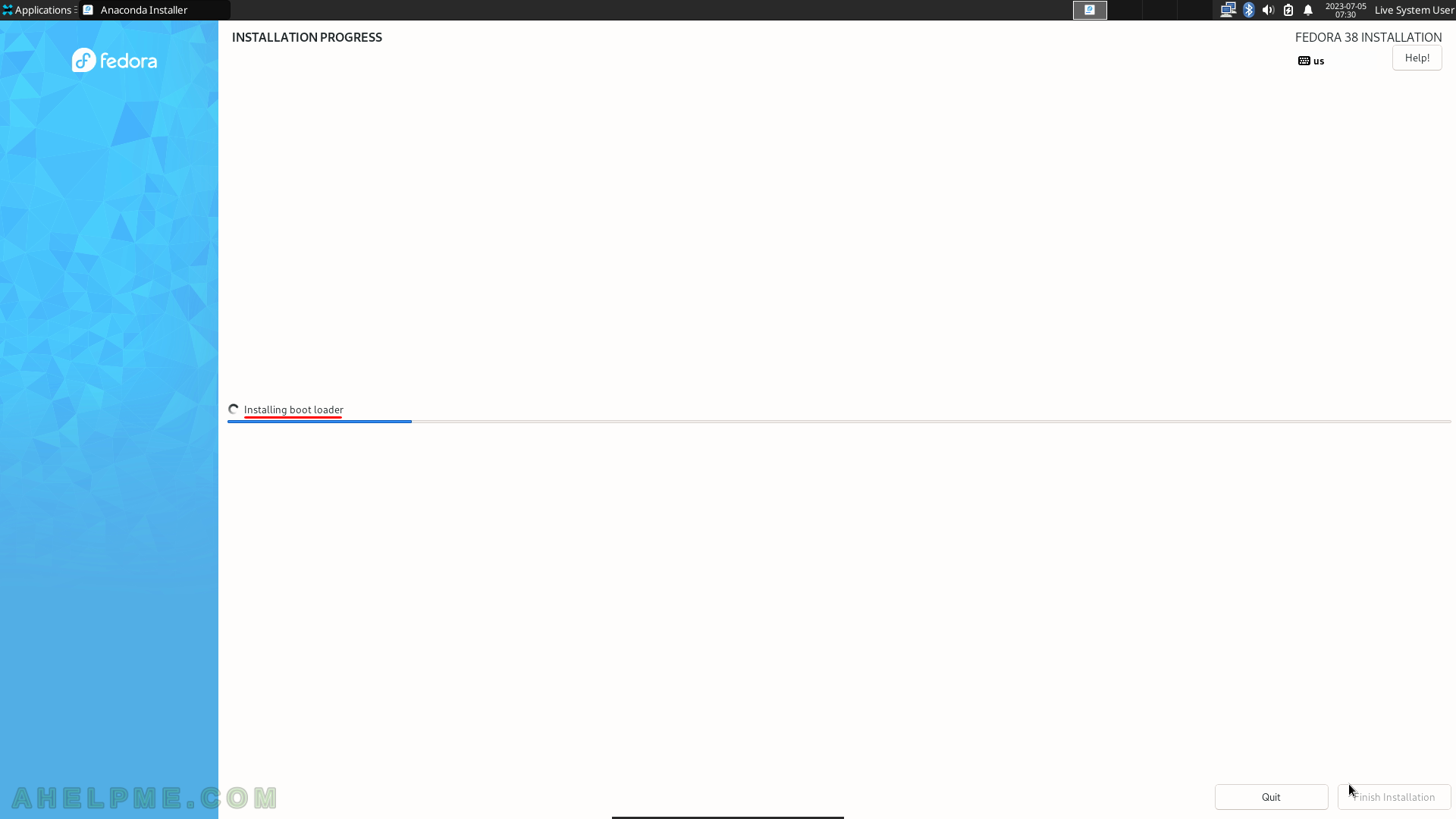
SCREENSHOT 24) The installation has finished.
Quit the installation program.
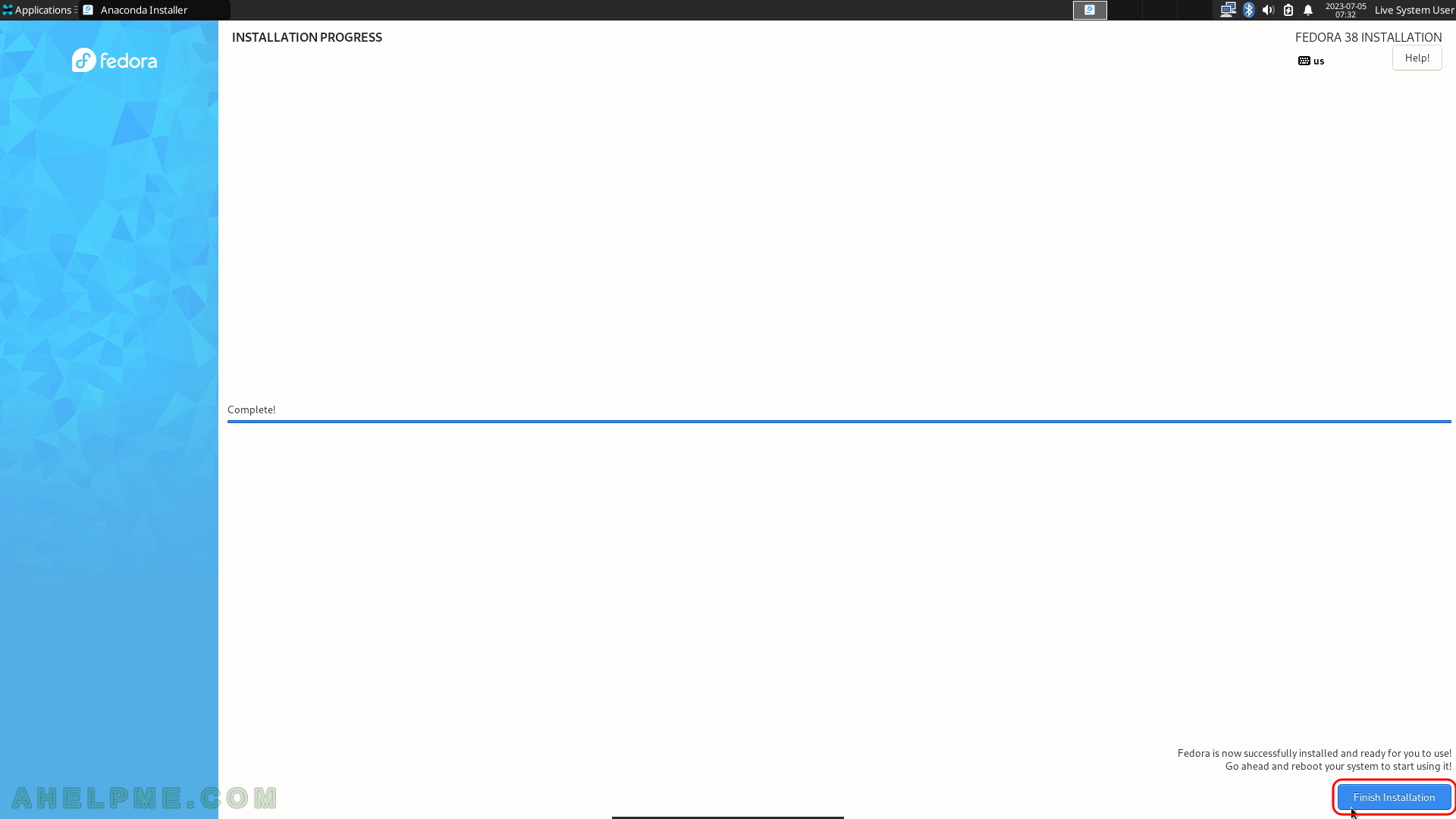
SCREENSHOT 25) The user is still in the Live image, so click on the top left corner on “Applications” and then click on “Log Out” as shown.
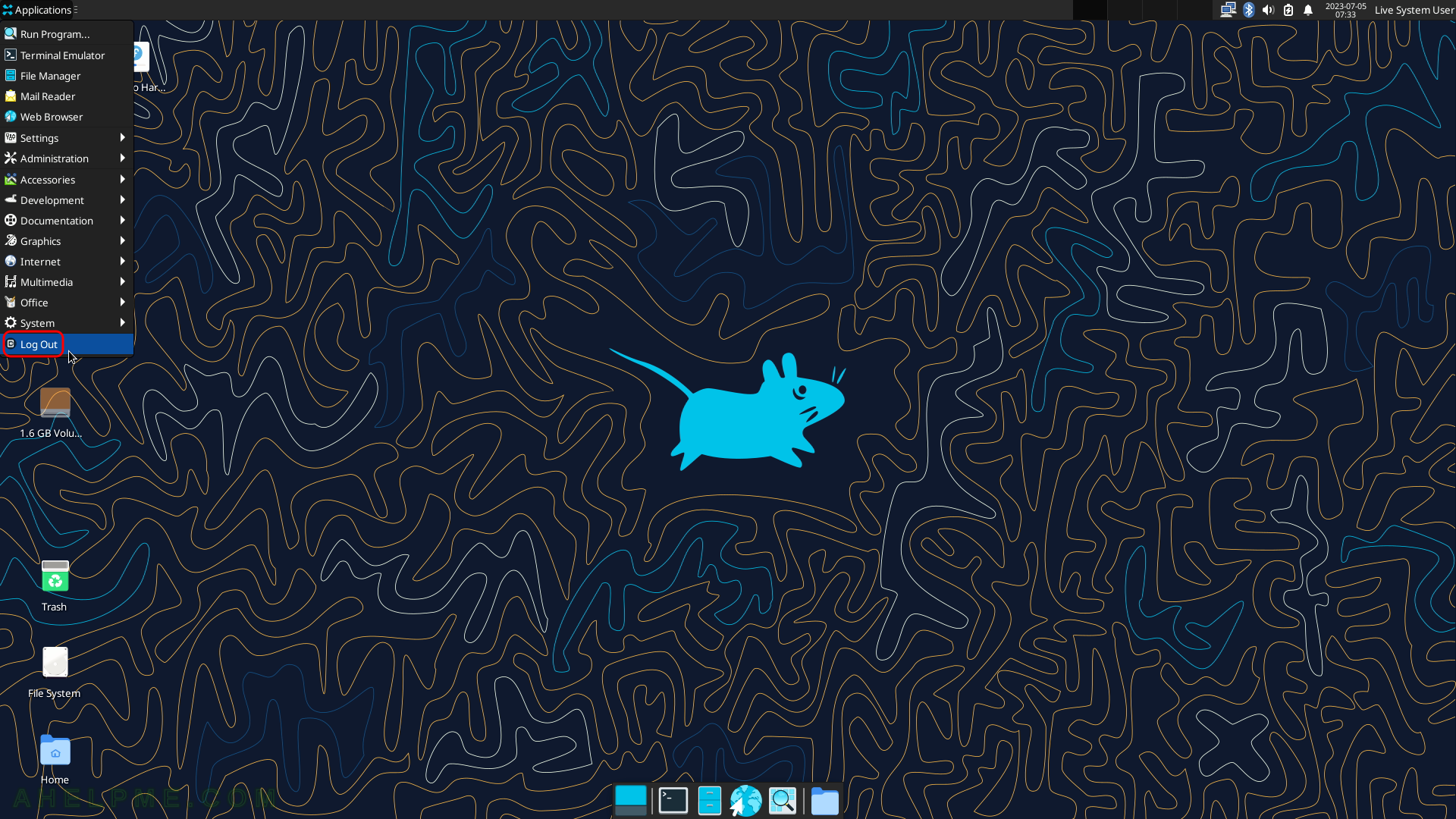
SCREENSHOT 26) Click on “Restart” to restart the computer.
The user may unplug or eject the installation media – the USB or CD/DVD Disk.
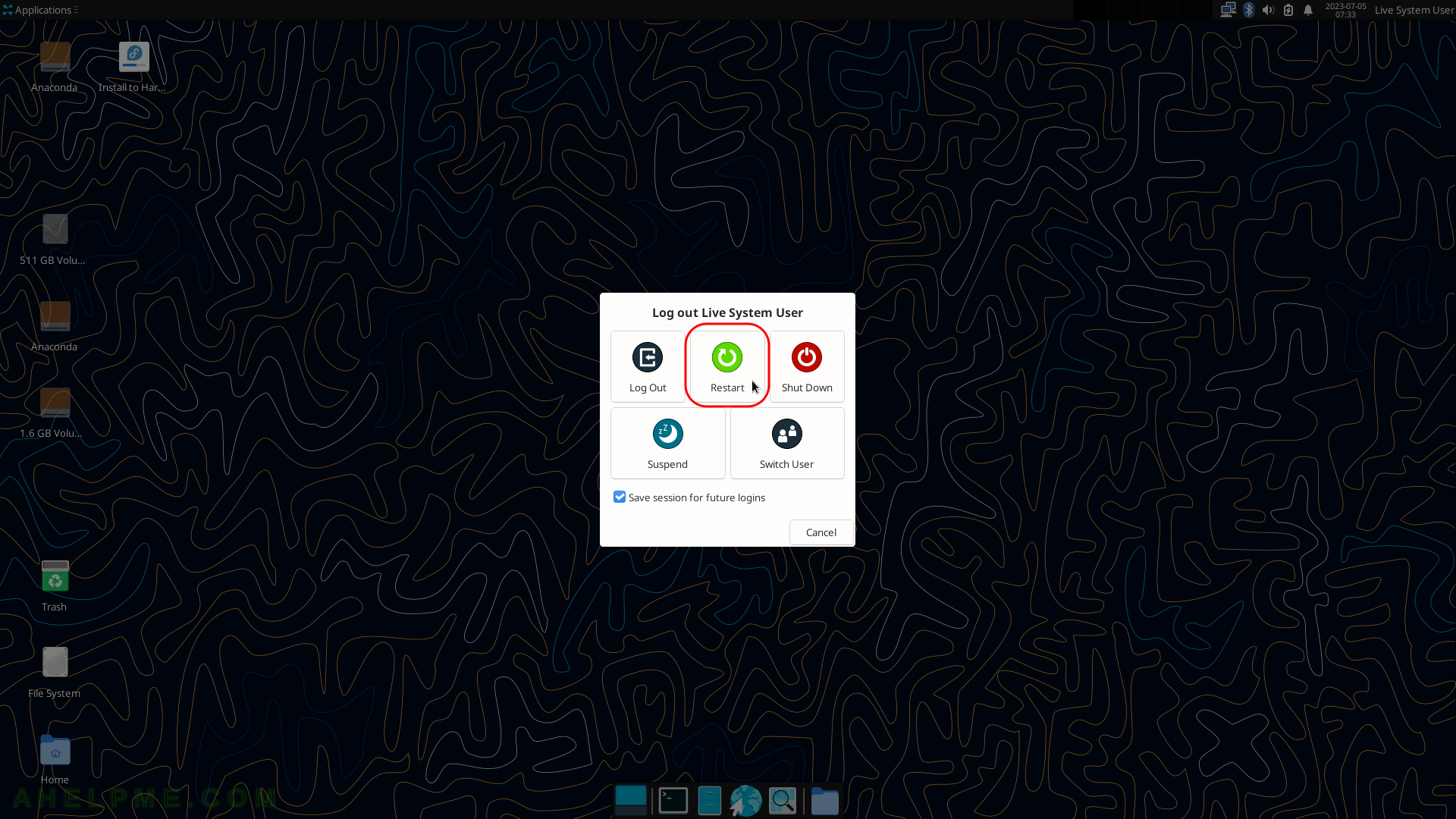
SCREENSHOT 27) Freshly installed Fedora 38 Xfce Desktop is the default boot option in the booting program (grub2).
There are more options if more OSes are preset in the computer. The setup found these additional Operating Systems and added them to the boot menu. The kernel version is shown – 6.2.9-300.
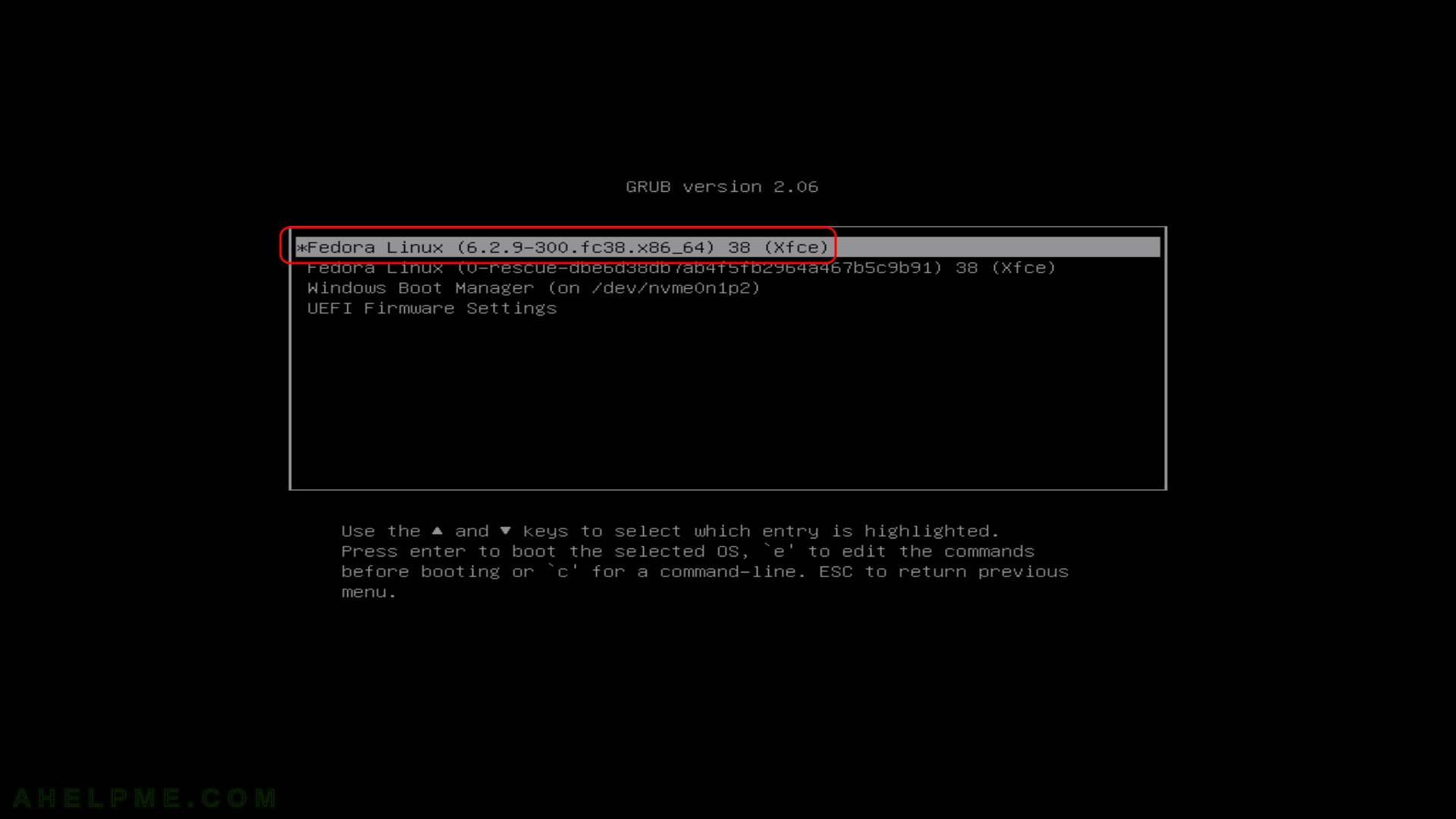
SCREENSHOT 28) Select your user and log in with the proper password.
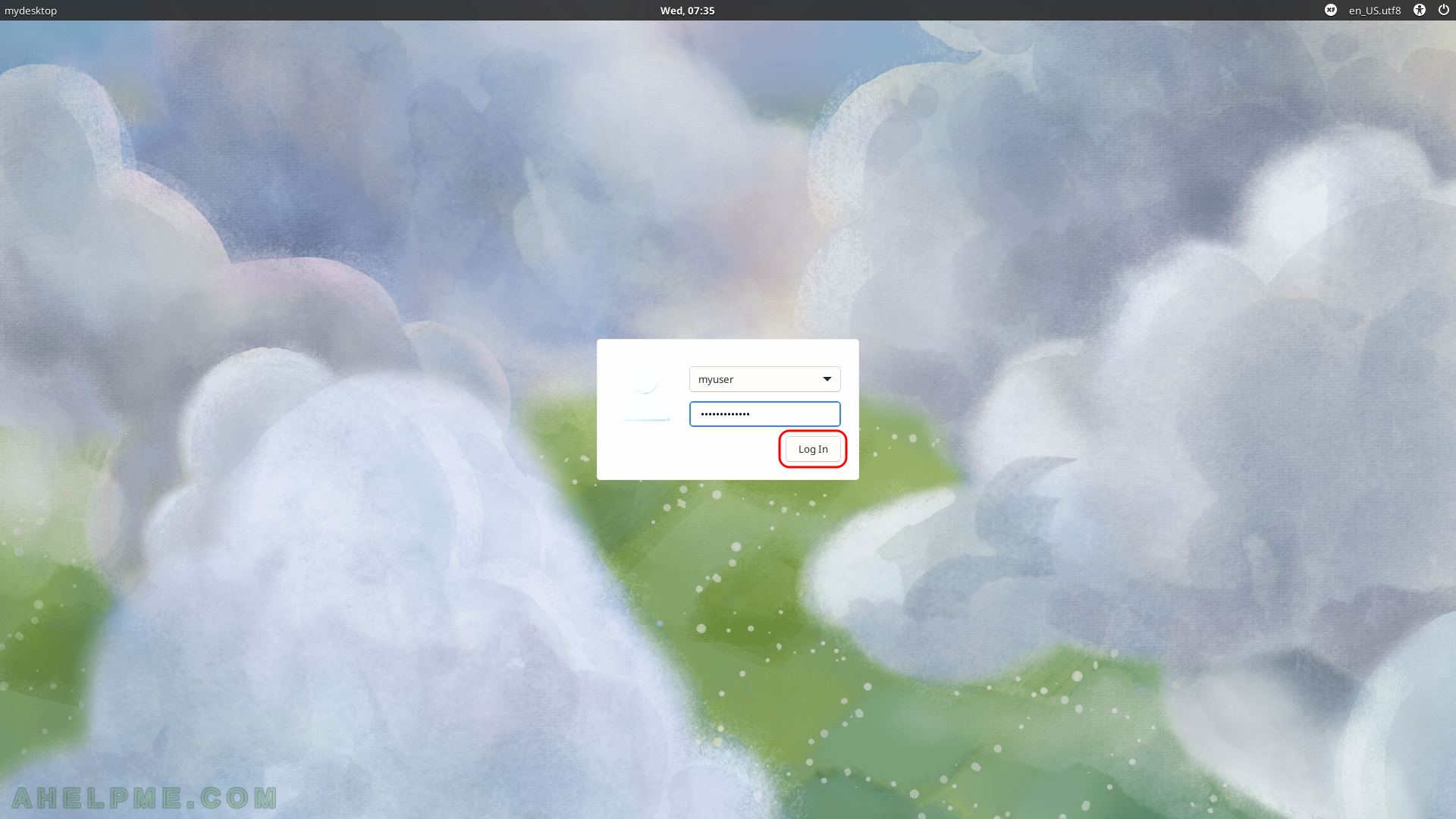
SCREENSHOT 29) This is the default look of the Xfce Desktop.
All of the panels (i.e. toolbars) could be rearranged and customized.
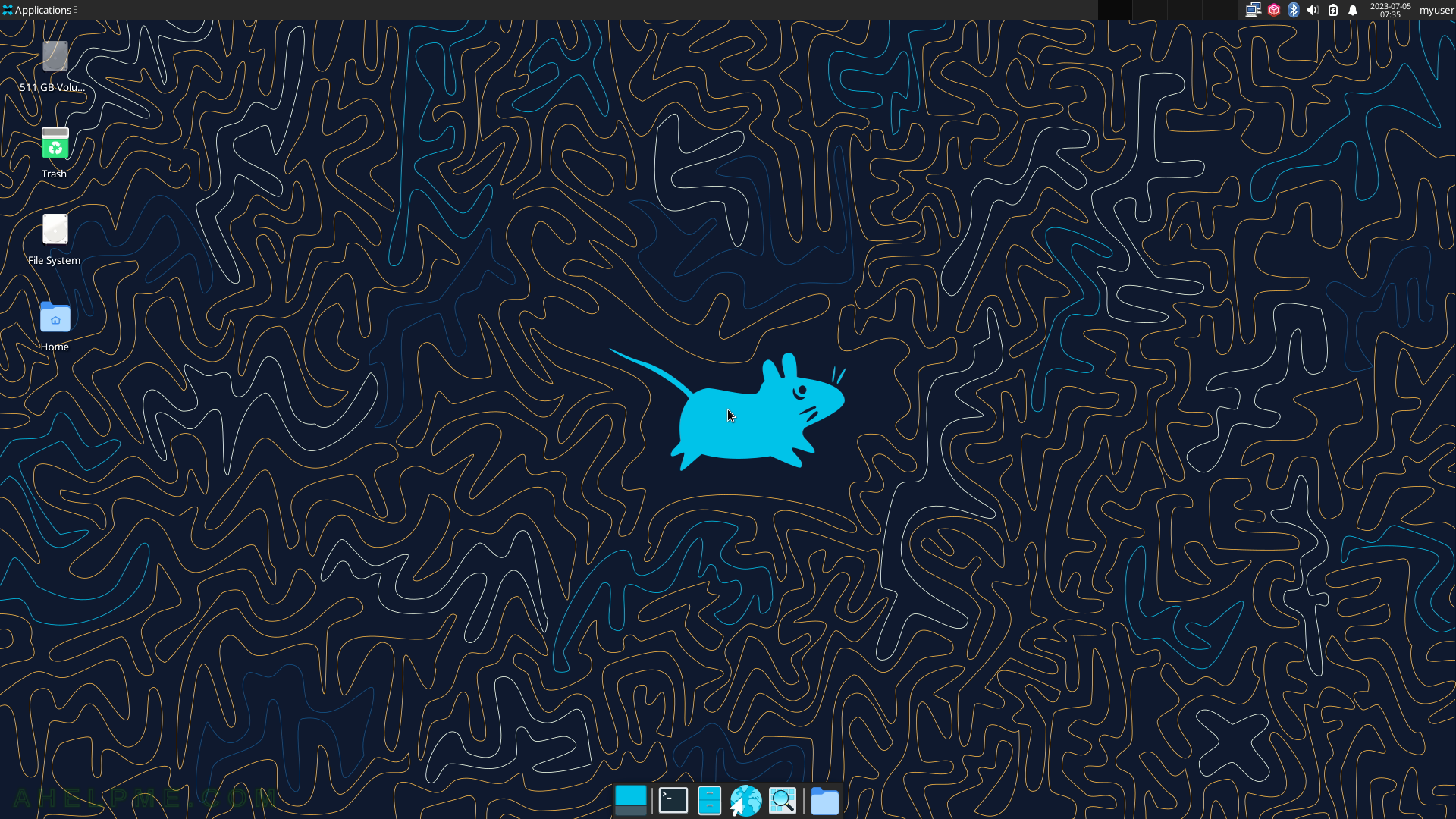
SCREENSHOT 30) Click on the top left corner “Applications” button to show the main menu.
Expand the System sub-menu and click on “About Xfce” to show Xfce and system information.
